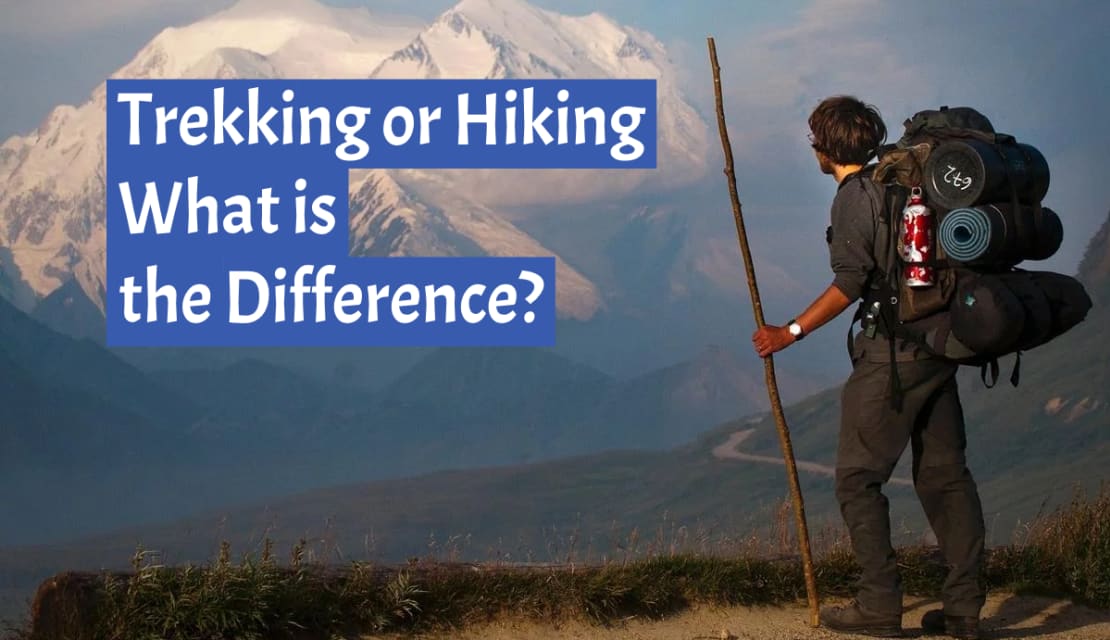Most of them interchange the words hiking and trekking as if they mean one event. This is true because they involve different kinds of experience. It’s all right if while hiking and trekking in the maze of doubts you get confused. However, let’s consider what differentiates them and prepare you for your next outdoor escapade.
Terrain and Intensity:
Hiking:
Usually entails a lot of walking along well-labeled trails that can often be found in easier and simpler terrain. It is appropriate for any fitness level, it is a moderately intense activity.
Trekking:
Terrain of moderate to severe difficulty. The environment may consist of rugged terrains, forests, and unexplored routes. Trekking requires much more stamina than hiking and may be more challenging.
Duration:
Hiking:
Usually of a shorter time period which may last for only one day and so on. This is an ideal day trip since most Americans often conduct “day hikes” as a part of their daily routine.
Trekking:
Entails a day-long trip or even weeks of traveling. Trekking may also involve overnight camping which enables people to cover larger areas in a small period.
Equipment:
Hiking:
One needs only to wear comfortable footwear, weather appropriate apparel, carry a backpack and keep enough drinking water for the trek. For shorter hikes, specialized equipment is quite limited.
Trekking:
Involve more advanced gear like stable hiking boots, trekking sticks, a pack with camping things, and sometimes specialized machinery suitable for difficult terrain and environmental situations.
Scenery and Exploration:
Hiking:
Usually involves having a nice look at nature sceneries, rather than some faraway places.
Trekking:
Provides a more experiential approach that allows visitors to explore lesser known landscapes and ecological habitats.
Adventure Level:
Hiking:
With the focus on a broad group of audiences, even amateurs. It comes in handy as a suitable gateway if someone wants something that is very easy to access and at an affordable cost too, especially when it comes to an outdoor activity that somebody is just starting out.
Trekking:
Targets more advanced travelers looking for a greater challenge, and intimacy with nature.
Understanding Hiking and Trekking Essentials: A Comprehensive Guide
What Is Hiking?
Joyful walks, which are usually associated with hiking, seem enjoyable and effortless. Day hikes and multi-day walks with little stress make it a pleasant walk through the park, so to speak.
What Is Trekking?
One type of tourism is known as trekking and it entails being away from home for almost a day or two, carrying the basic necessities on your back and staying in a tent. It is now commonly referred to as the activity of walking through different terrains such as desert and mountain.
Difference Between Hiking And Trekking:
Hiking involves engaging walks in nature’s environment that last for one day or overnight along established routes. Trekking is usually long-distance walking and sometimes off established trails taking many days, often in the mountains or other remote areas that demand more fitness.
Health Benefits of Hiking and Trekking:
Both prevent heart diseases in the sense that they lower the blood pressure, help build muscle mass and give a healthier bone. In addition, they improve mental health, ease off depression, distress, and stress, thus general physical fitness.
Things To Carry For Hiking And Trekking:
Navigation:
For improved wilderness exploration, a map, compass, and GPS device.
Whistle and/or orienteering compass is multi-purpose and safety tools.
Headlamp:
A must have at night for guiding in navigation with rechargeable options for environmental sustainability.
Sun Protection:
Sun protection accessories like sunglasses, sunscreen, and sun-protection clothing to avoid problems related to the sun.
Clothing:
Wide-brimmed hat protecting you from the sun.
For variable weather conditions, water repelling trouser, fleece inner, and waterproof jacket.
Specialized activity shoes with ankle support to avoid injuries.
First Aid:
Blister kit essential items, bandage, gauze, tape, disinfections, pain medications, pen and paper.
Knife:
TK knife with many purposes ideal for outdoor use.
Fire:
A good supply of lighter or waterproof matches for emergencies.
Emergency Shelter:
A rain poncho, a blanket or a sleeping bag (depending on weather conditions) for shelter and comfort.
Food and Water:
An additional day’s worth of extra food and energy bars, nuts, and dried fruit as well as a reliable way to treat the water.
Trekking Bag:
The backpack is roomy enough, adjustable, has holders for the two water bottles, a pole-holder, and it comes fitted with a raincover.




















